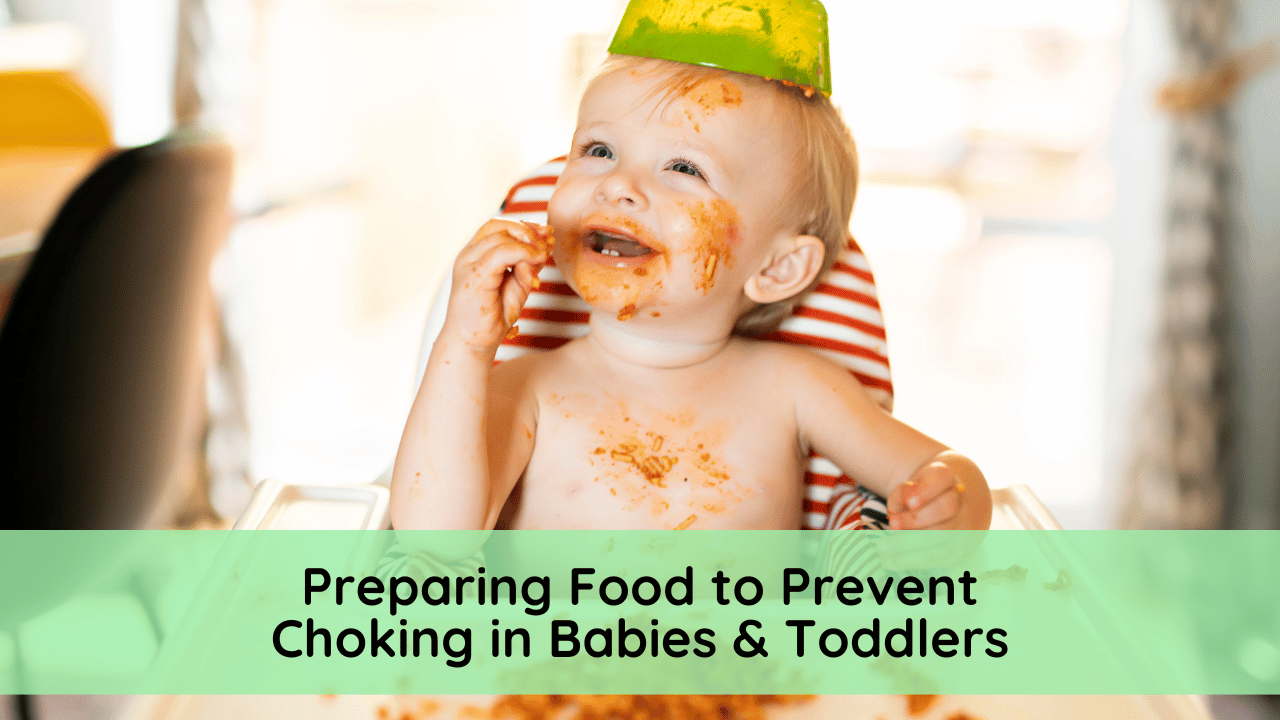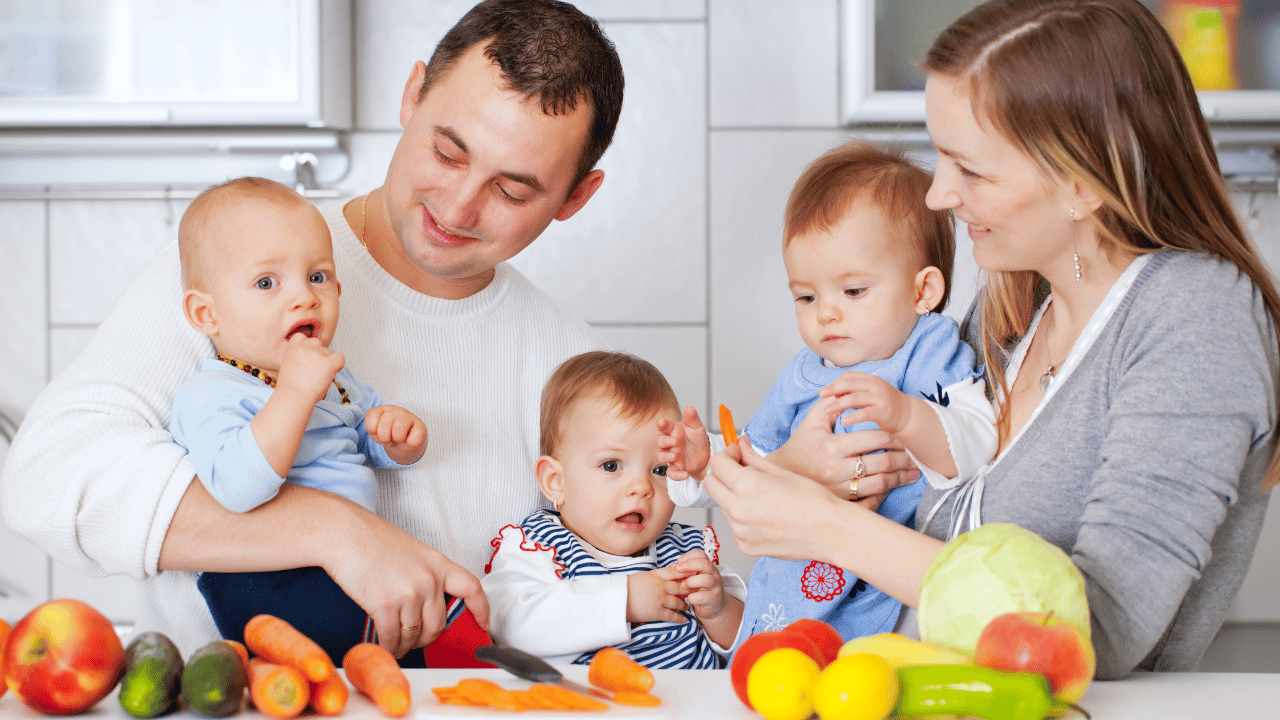Preparing Food to Prevent Choking in Babies & Toddlers
Aug 14, 2023
Starting solid foods is so very exciting...
It can also be...terrifying.
One of the biggest fears when it comes to transitioning from purees to finger foods is choking.
I understand completely - a choking episode happened to Max even though *everything* was cut by the guidelines.
How did I know the difference between choking vs gagging?
It was mostly the look in Max's eyes. He went from coughing to turning blue around the lips and he looked so scared.
My mommy instinct set in - I got him out of his high chair, placed him facing downward and did 3 back blows before the piece of pasta came flying out.
He cried and I cried.
Yes. It was terrifying. I was so glad I was able to easily respond.
We know that progressing to finger food is important, but it's equally important to be mindful of potential choking hazards.
When serving finger foods, remember the 7 groups of foods that have the highest choking risks:

Biggest choking hazard foods:
-
Small hard foods that are difficult for children to bite or chew.
-
nuts, large seeds, raw carrot, raw apple, hard rice crackers.
-
-
Small round foods that can get stuck in children’s throats
-
grapes, cherry tomatoes, berries, raisins, peas.
-
-
Foods with skin or leaves that are difficult to chew
-
lettuce, nectarines, tomatoes, sausages.
-
-
Compressible foods that are easily squashed into the shape of a child’s throat
-
pieces of cooked meat, hot dogs, popcorn, marshmallows.
-
-
Thick pastes that can get stuck in children’s throats
-
peanut butter.
-
-
Fibrous or stringy food that is difficult to chew
-
celery, rhubarb, pineapple.
-
-
Foods with bones
-
fish or chicken or turkey legs.
-
Should you avoid these foods at all cost? No!
But you can change them in order to make them a bit safer.

Cutting finger food into appropriate shapes and sizes:
While certain foods are fine to serve as-is, most finger foods need to change a little bit to make them safe.
The New Zealand Ministry of Health provides great guidelines for food safety in babies and toddlers under two.
-
Remove the high-risk parts of the food –
-
Peel off the skin, remove the strong fibers, remove the seeds and pits, and remove any bones.
-
-
Alter the food texture –
-
Grate, cook until soft, and puree, mash or finely chop the food.
-
-
Alter the food shape –
-
Cut round foods like grapes into quarters, chop salad leaves and meat finely.
-
-
Spread thinly –
-
Use smooth nut or seed pastes/butter sparingly by spreading thinly across toast.
-
-
Don’t give children under three years of age any treats they could choke on –
-
like marshmallows, popcorn or lollipops.
-
-
Avoid giving some small hard foods –
-
such as whole nuts, large seeds or hard dried fruit until children are at least five years old.
-

Moving from purees to finger foods:
Start by increasing the amount of texture in baby food. Leave soft chunks of food in the purees.
Move to soft finger foods that easily dissolve in the mouth, such as cooked vegetables, ripe fruits, and well-cooked grains.
Gradually progress to firmer textures as your baby develops their chewing skills and becomes more comfortable with finger foods.
>>> If you are looking for hand-holding from purees to finger foods with a focus on safety, get my cookbook Moving Past Purees <<<

What do you do if your baby won't chew food?
Some babies won't chew food no matter what you do.
Start by having as many family meals as possible (even just a few per week is good!). Let them watch you while you are eating. Model how to chew food with over-exaggerated movements.
Offer soft textures and correct sizes for safety.
Your baby will get used to it - even if it takes a while.
-
Make sure your baby is ready to start baby-led weaning. Being able to sit upright is very important when preventing choking.
-
Always supervise your baby during mealtime, especially when they're eating finger foods, even if you have to leave for just a second.
When introducing finger foods to your baby, prioritizing their safety is paramount. By following these tips for managing choking hazards with finger foods, you'll create a safer eating environment and ensure a positive and enjoyable mealtime experience.
If you still have questions, let's come up with a plan tailored to your baby's needs.
>>> Tired of worrying about feeding your baby? Get personalized support so you can enjoy feeding your baby. <<<
Free Resource for Parents and Medical Providers:
The Baby Feeding Database
Helping you understand what formulas are available and narrow down what is best for your family.
This will sign you up for the Baby Feeding Coach email list. I will not spam you. Opt out anytime.


